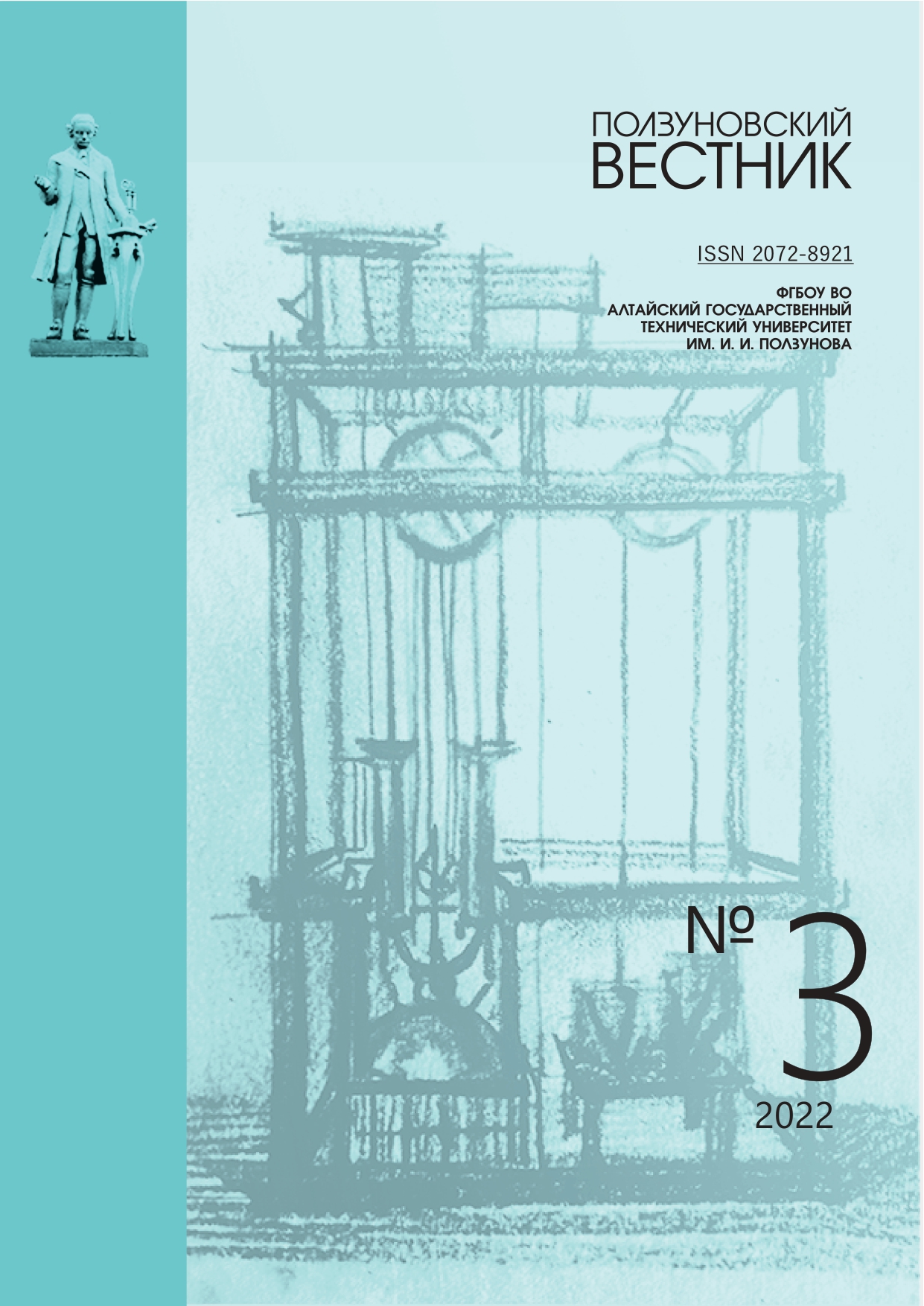INVESTIGATION OF THE PROPERTIES OF MINCED MEAT SYSTEMS FROM A MIXTURE OF BEEF AND PORK WITH VEGETABLE RAW MATERIALS
EDN: MTVJGT
DOI:
https://doi.org/10.25712/ASTU.2072-8921.2022.03.011Keywords:
beef meat, pork meat, minced meat, pumpkin, organoleptic and functional-technological indicatorsAbstract
The article presents the results of a sociological survey to establish the taste preferences of potential consumers regarding the choice of chopped meat semi-finished products. The aim of the work is to develop recipe compositions of meat-vegetable minced meat based on beef and pork meat in combination with a vegetable component in the form of pumpkin. The object of the study is minced meat from a mixture of beef and pork with the addition of pumpkin in an amount of up to 30%. The subject of the study is organoleptic parameters, moisture–retaining, moisture-binding ability, pH, mass fraction of moisture, adhesion of minced meat with the addition of a vegetable component. The effect of various dosages of pumpkin application on the organoleptic and functional-technological parameters of the stuffing system is investigated. During the organoleptic evaluation, a sample of minced meat containing pumpkin in an amount of 20% received the maximum number of points. The addition of pumpkin to the stuffing system leads to an increase in the mass fraction of moisture by 2.5%, the water absorption capacity by 5.2 %, and water binding capacity by 4.5 %. The introduction of pumpkin into the stuffing system contributes to an increase in the adhesion of the stuffing system. The amount of introduced pumpkin needed to achieve the best organoleptic characteristics of the beef and pork-based stuffing system was 20% instead of the meat part.
References
González N., Marquès M., Nadal M., Domingo J. (2020). Meat consumption: Which are the current global risks? A review of recent (2010-2020) evidences. Food Research International, 137, 109620.
Martini S., Conte A., Tagliazucchi D. (2019). Comparative peptidomic profile and bioactivities of cooked beef, pork, chicken and turkey meat after in vitro gastro-intestinal digestion. Journal of Proteomics, 208, 103500.
Типсина Н.Н., Селезнева Г.К. Использование пюре из тыквы в пищевой промышленности // Вестник КрасГАУ. 2013. №12. С. 14.
Петрунина И.В., Осянин Д.Н. Перспективы развития производства мяса и мясных продуктов до 2030 года // Все о мясе. 2020. № 5S. С. 261-264. DOI: https://doi.org/10.21323/2071–2499–2020–5S-261-264.
Горлов И.Ф., Сложенкина М.И., Бушуева И.С. Улучшение потребительских свойств мясных продуктов за счет биологически активных веществ // Хранение и переработка сельхозсырья. 2013. № 5. С. 32–33.
Вайтанис М.А., Ходырева З.Р. Использование конопляной муки при производстве мясных рубленых полуфабрикатов // Вестник КрасГАУ. 2021. № 1. С. 126–133. DOI: 10.36718/1819-4036-2021-1-126-133.
Брошко Д.В., Велично Н.А., Рыгалова Е.А. Возможность использования порошка из ягодных выжимок костяники каменистой в рецептурах мясных рубленых полуфабрикатов // Вестник КрасГАУ. 2020. № 2. С. 177–182.
DOI: 10.36718/1819-4036-2020-2-177-182.
Величко Н.А., Пьянзина А.А. Разработка рецептуры и технологии мясного рубленого полуфабриката с растительным компонентом // Вестник КрасГАУ. 2020. № 3. С. 164–170. DOI: 10.36718/1819-4036-2020-3-164-170.
Schetinin M., Vaytanis M., Musina O., Khodyreva Z. Technological and Nutritional Potential of Lentil in the Turkey Cutlets Production // Intelligent Biotechnologies of Natural and Synthetic Biologically Active Substances. ICAETT 2021. Lecture Notes in Networks and Systems. 2022. V. 408. P. 159-166. https://doi.org/10.1007/978-3-030-96641-6_19.
Influence of the addition of different origin sources of protein on meat products sensory acceptance / Sol Zamuz, Laura Purriños, Fernando Galvez [et al.] // Journal of Food Processing and Preservation, 2018. Vol. 43. Issue 5. P. 1-12. DOI 10.1111/jfpp.13940. URL: https://ifst.onlinelibrary. wiley.com/doi/pdf/10.1111/jfpp.13940 (дата обращения: 09.09.2020).
ГОСТ 7975-2013. Тыква продовольственная свежая Технические условия. Введ. 2015.01.01. Москва: Стандартинформ, 2013. 6 с.
О безопасности пищевой продукции: технический регламент таможенного союза № 021/2011: принят решением Комиссии Таможенного союза от 9 декабря 2011 года N 880. Москва: Изд-во стандартов, 2011. 242 с.
О безопасности мяса и мясной продукции: технический регламент таможенного союза 034/2013: принят решением Комиссии Таможенного союза от 9 октября 2013 года N 68. Москва: Изд-во стандартов, 2013. - 56 с.
ГОСТ 33319-2015. Мясо и мясные продукты. Метод определения массовой доли влаги. Введ. 2016.07.01. Москва: Стандартинформ, 2015. 6 с.
Методы исследования мяса и мясных продуктов / Л.В. Антипова, И.А. Глотова, И.А. Рогов. М.: Колос, 2001. 376 с.
Скурихин И.М., Тутельян В.А. Химический состав российских продуктов питания: Справочник. М.: ДеЛипринт, 2002. 236 с.
De Escalada Pla M.F., Ponce N.M., Stortz C.A. et al. Composition and functional properties of enriched fiber products obtained from pumpkin (Cucurbita moschata Duchesne ex Poiret) // LWT. Food Science and Technology. 2007. V. 40, № 7. C. 1176–1185.
Published
How to Cite
Issue
Section
License
Copyright (c) 2022 Марина Александровна Вайтанис, Зоя Рафаиловна Ходырева

This work is licensed under a Creative Commons Attribution 4.0 International License.
















 .
. This work is licensed under a
This work is licensed under a 
